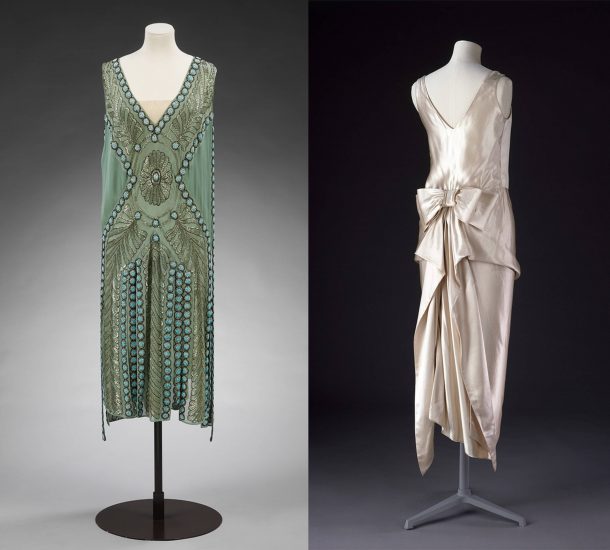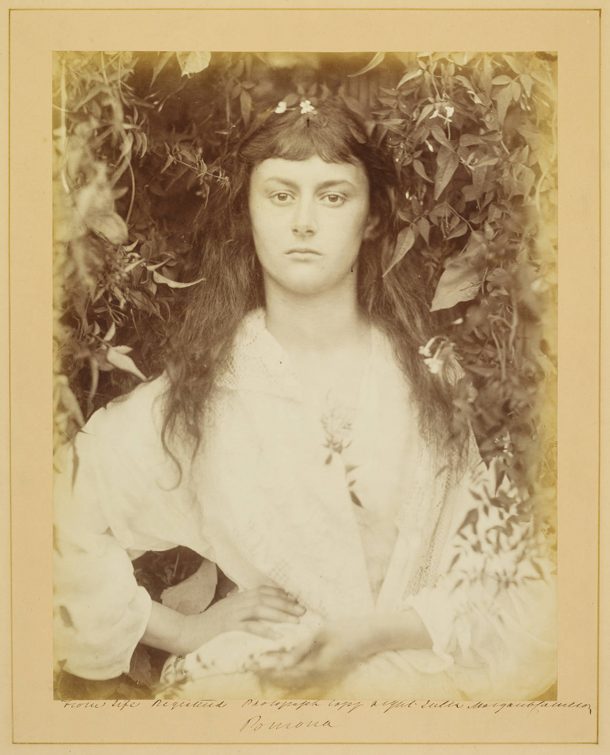This week on Secrets of the Museum we started with a back-stage look at some important costumes in our Theatre & Performance Collection, and enjoyed a sneak preview of two major exhibitions coming later this year.
The Louis Vuitton trunk featured in the programme is a highlight from our new exhibition Bags: Inside Out, opening next month. It was owned by American socialite Emilie Grigsby (1876 – 1964), whose enviable dress collection came to the V&A in the 1960s, but was made earlier in the 20th century by some of fashion’s biggest names. There’s more on her glamorous life and travelling wardrobe here.

As mentioned in the programme, Miss Emilie Grigsby would have changed her outfits frequently during her travels around the world on ocean liners such as the Olympic, the Aquitania and the Lusitania. The key, theatrical moment of life on board was the ‘grande descente’, when travellers would arrive for dinner from the upper decks resplendent in eveningwear. This video shows how we recreated three of Emilie Grigsby’s outfits to stage our own spectacular ‘grande descente’.
As mentioned by Lucia Savi, the exhibition Bags: Inside Out has given us the chance to examine the travelling trunk itself in more detail, revealing the locations behind Emilie’s adventures. The show opens on 25 April 2020, with preview days for V&A Members from 23 April. The other exhibition discussed last night that we’re eagerly building up to is Alice: Curiouser and Curiouser, opening 27 June 2020. Following on from yesterday’s World Book Day celebrations, re-reading Alice’s Adventures in Wonderland, in a book group or to children, is fascinating – and if you don’t already own a copy, we can help.

Alice Liddell met photographer Julia Margaret Cameron while on holiday in Freshwater on the Isle of Wight. Cameron’s working methods were criticised for their unconventionality – but as Marta Weiss writes in her book – they were ‘also celebrated for the beauty of her compositions and her conviction that photography was an art form.’ There is more on the ‘real’ Alice in Wonderland here.
Photography is hugely important to the V&A, both in terms of the collection and as something that underpins what we do around it. There is a talented team of photographers here (they’re always very busy), and the relationship between the objects we hold and the photographs we take – and films we make – of them is complex. It’s likely that more people will see a photograph of an object than the object itself. As with the featured Louis Vuitton trunk, which was not formally part of the collection until very recently, the images we take of objects are part of the V&A, but not collection objects – and this relationship is the subject of research by photographic historian and anthropologist Elizabeth Edwards. You can read about her work here.
The fact that making a copy enables a kind of preservation is perfectly highlighted by Shakespeare’s First Folio (the fact that the V&A holds 3 of them seems relevant). In The Lives of the Objects, Geoffrey Marsh discusses the impact of the book we saw being conserved last night, but he also writes:
Looking at the First Folio, it is worth thinking about the perilous route by which these writings were preserved for posterity. Manuscripts and books were always at risk from damp, fire, rodents and neglect. The first Globe Theatre in London, presumably with shelves of fascinating scripts and records, was destroyed by fire in 1613 … an accident could wipe out a writer’s entire oeuvre.
So, thinking about the importance of conservation, here’s a film showing the full structural repair of the Spirit of Gaiety, a giant sculpture of an angel made by Hibbert C. Binney to stand above the Gaiety Theatre in London’s West End:


